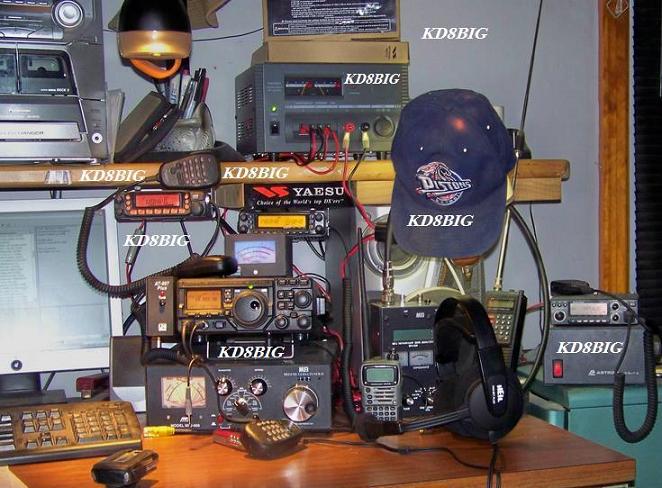Friday, June 6, 2014
Ham Radio assisted in Reactivating Three Decade Old NASA Satellite
The U-K newspaper the Daily Mail says that several radio amateurs were involved with Project Reboot in regaining control on May 29th of the 35 year old abandoned International Sun-Earth Explorer 3 spacecraft. Hams named in the article include Dennis Wingo, KD4ETA; Achim Vollhardt, DH2VA, and Mario Lorenz DL5MLO.
The International Sun-Earth Explorer was launched in 1978 to study Earth’s magnetosphere. It carries thirteen scientific instruments to measure plasmas, energetic particles, waves, and fields. As of this past May, all but one is thought to be functional. An on-board data handling system gathers the scientific and engineering information from all systems in the spacecraft. It then formats this information into a serial stream for transmission back to Earth by an on-board 5 watt transmitter.
After completing its main mission, the satellite was repurposed in 1983 to study two comets. At that time it was renamed the International Cometary Explorer and has been in a heliocentric orbit since then, traveling just slightly faster than Earth. It’s finally catching up to our planet from behind, and will be closest to Earth this August.
Now, KD4ETA has released an update on the attempts by the projects volunteers, including the radio amateurs, to gain control of the spacecraft. According to Wingo, the probe has been successfully commanded into engineering telemetry mode. He noted the job done by DH2VA and also Phil Karn, KA9Q, to make this happen. Karn is well known in the amateur radio community for his work on the KA9Q Network Operating System, the early 9600 bit FSK radio modems, and more recently, the introduction of forward error correction into the Amateur Satellite Service.
As we go to air, Project Reboot members are working on deadline. If they get the spacecraft to change its orbit quickly, it can use the Moon's gravity to get back into a useful halo orbit. If not, the fear is that for all practical purposes the International Sun-Earth Explorer 3 could be lost. We will keep you posted.
For the Amateur Radio Newsline, I’m Heather Embee, KB3TZD, in Berwick, Pennsylvania.
--
The actual first command to the revived International Sun-Earth Explorer 3 spacecraft was successfully sent from the Arecibo Radio Observatory in Puerto Rico using the facilities 305 meter dish. This after the volunteer team installed the needed modulator, demodulator and power amplifier to make contact and control of the satellite possible. More is on the web at tinyurl.com/reboot-project (AMSAT-UK, Daily Mail, Southgate)
HOW TO READ PROPAGATION NUMBERS
The A index [ LOW is GOOD ]
- 1 to 6 is BEST
- 7 to 9 is OK
- 11 or more is BAD
Represents the overall geomagnetic condition of the ionosphere ("Ap" if averaged from the Kp-Index) (an average of the eight 3-hour K-Indices) ('A' referring to amplitude) over a given 24 hour period, ranging (linearly) typically from 1-100 but theoretically up to 400.
A lower A-Index generally suggests better propagation on the 10, 12, 15, 17, & 20 Meter Bands; a low & steady Ap-Index generally suggest good propagation on the 30, 40, 60, 80, & 160 Meter Bands.
SFI index [ HIGH is GOOD ]
- 70 NOT GOOD
- 80 GOOD
- 90 BETTER
- 100+ BEST
The measure of total radio emissions from the sun at 10.7cm (2800 MHz), on a scale of 60 (no sunspots) to 300, generally corresponding to the sunspot level, but being too low in energy to cause ionization, not related to the ionization level of the Ionosphere.
Higher Solar Flux generally suggests better propagation on the 10, 12, 15, 17, & 20 Meter Bands; Solar Flux rarely affects the 30, 40, 60, 80, & 160 Meter Bands.
K index [ LOW is GOOD ]
- 0 or 1 is BEST
- 2 is OK
- 3 or more is BAD
- 5 is VERY VERY BAD
The overall geomagnetic condition of the ionosphere ("Kp" if averaged over the planet) over the past 3 hours, measured by 13 magnetometers between 46 & 63 degrees of latitude, and ranging quasi-logarithmically from 0-9. Designed to detect solar particle radiation by its magnetic effect. A higher K-index generally means worse HF conditions.
A lower K-Index generally suggests better propagation on the 10, 12, 15, 17, & 20 Meter Bands; a low & steady Kp-Index generally suggest good propagation on the 30, 40, 60, 80, & 160 Meter Bands.
Terms of Service
I am not responsible for any thing that happens to your mental health, computer and all personal property because you visited my site.
This site is a collection of some things sent to me by e-mail, obtained from other blogs and the internet. If there is a picture or quote that is copyrighted to you let me know and I will remove your item .
Thoughts expressed in my blog are just that . I give My Opinion on the many events, products and how too, reported by the media and other web-sites.
Do not use this blog site to obtain weather events or disasters information. What I post may not be correct. Always get information from the proper media, weather (NWS)(NOAA)
Pacific Tsunami Warning Center and USGS sites










